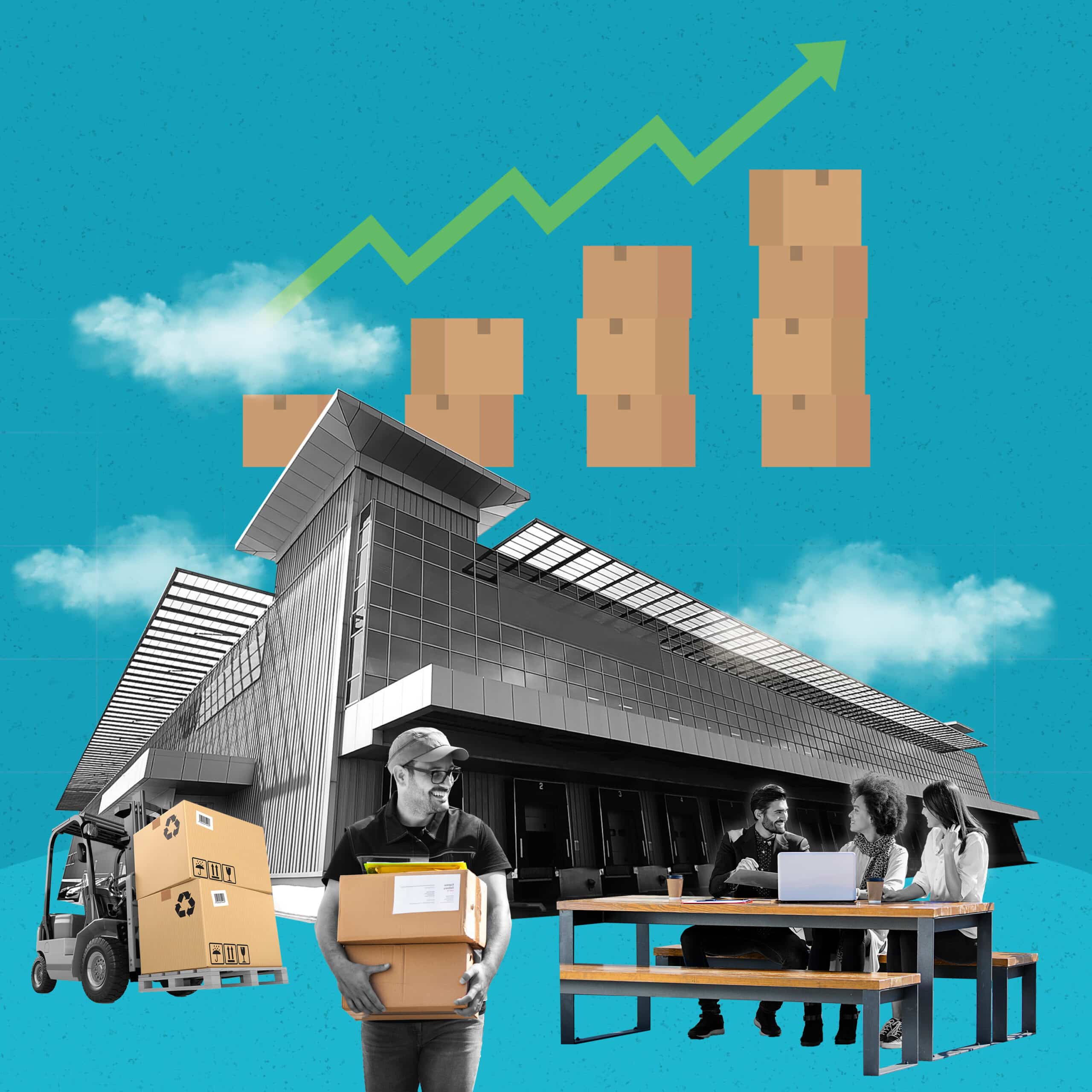For all the talk of challenging times in commercial real estate (CRE), the good news is that the industrial structures remain in demand.
Although interest rates have risen significantly since 2019, the need for industrial property has also been strong. This strength has been the byproduct of several major factors.
The Growing Economy
According to the National Association of Realtors (NAR), the industrial sector had the “most robust growth among all commercial real estate sectors” as of the third quarter of 2023. The big question, of course, is whether such growth will continue in 2024.
This is where we get to the push and pull of supply and demand. There’s a huge amount of demand for industrial space, but there’s also a growing supply: NAR says in the third quarter there was a “43% increase in square footage delivered over the past year in the industrial real estate market.”
According to a January commentary by Cushman & Wakefield, “The total amount of industrial space forecasted to deliver from 2023 to 2024 (615.6 MSF in 2023 and 330.5 MSF in 2024). This will continue to exert upward pressure on vacancy rates. However, rates will remain historically healthy across most markets.”
How can rates increase even as supply expands? We saw this trick in 2023. Although there were widespread forecasts of a downturn and recession, the economy proved stronger than many expected. Such broad growth has been reflected in the stock market. The Dow, the S&P 500, and the Nasdaq all rose significantly in 2023. And, despite predictions to the contrary, last year fell short of a recession.
As Axios recently observed, “The U.S. boasts the strongest economy of any rich nation. The much-predicted 2023 recession failed to appear, employment has remained robust, real wages have been rising, and the outlook for 2024 is similarly healthy.”
In the fourth quarter of 2019, just before the pandemic, the annual U.S. GDP stood at $21.7 trillion, productivity that reached $26.8 trillion last summer. To service this growing economy, what’s needed are facilities to manufacture, assemble, ship, or store, so the odds are that industrial CRE will be involved. Such structures typically include high ceilings, loading docks for trucks and sometimes rail-car sidings, heavy-duty utilities, office space, and other specialized features required by many businesses.
Supply-Chain Cautions and Benefits
The supply-chain shortages from 2021 to 2023 necessitated that many companies re-think dependence on overseas production. In particular, ongoing concerns regarding a potential trade war between the U.S. and China.
“Both have the same fear,” said the Peterson Institute for International Economics, “that the other side will suddenly weaponize trade flows — cut off imports or exports — in the name of security. Trying to get ahead of that, each is now attempting to diversify.”
One result has been a growing interest in reshoring, bringing physical production and manufacturing jobs back to the U.S. The Reshoring Initiative reported that in the first quarter of 2023, “average spending on U.S. factory construction was more than double the average from the past 17 years.” The organization said in late November that it expected to see 300,000 jobs returned to the U.S. for the year.
The Washington Effect
The passage of new legislation in Washington has injected new funding and job demand into the economy. As The Hill pointed out in October, the Chips and Science Act, the Bipartisan Infrastructure Law, and the Inflation Reduction Act have “already led to an investment boom in factory construction.”
Figures from the Census Bureau confirm that observation. The annual rate for manufacturing construction spending — spending for such things as factories and warehouses — went from $82.2 billion in November 2019 to $209.8 billion in November 2023.
New Technologies
Internet growth has spawned enormous demand for physical space. Leading the pack, Amazon says it delivers 10 billion packages a year, a supply chain that requires 2,000 facilities, including more than 200 fulfillment centers.
In comparison, the Postal Service delivered more than seven billion packages in fiscal 2023 while the United Parcel Service had 6.2 billion package deliveries in 2022.
To operate the Internet, the Cloud, cell phone networks, and newly-emerging AI systems requires vast facilities. Dgtl Infra reports that there are now more than 2,500 data centers, with more than half located in Northern Virginia, Dallas, and Northern California (Silicon Valley).
“Global data center capital expenditures in 2023 surpassed $200 billion,” according to Dgtl Infra, “with hyperscale developers contributing over $125 billion (more than 60%) towards building these massive facilities.”
Looking toward the rest of 2024, the prospects for additional industrial development likely relate to ongoing economic growth and lower interest rates. Such developments, if they happen, should generally boost investment, sales, and corporate profits — all events that are good for industrial property.
Learn more by visiting KBS.com/Insights.




